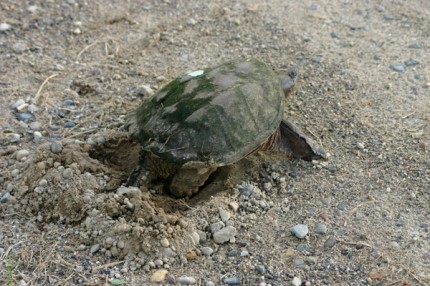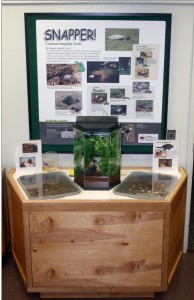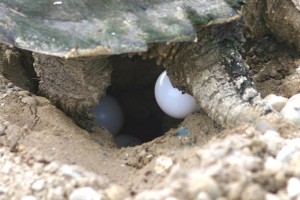

(Chelsea Update would like to thank Tom Hodgson and the Waterloo Natural History Association for the photos and information in this story.)
It’s that time of year again — turtle egg-laying season has begun, and for the next month there will be a parade of turtles crossing area roads on their way to favorite nesting sites.
And although there will always be thoughtless individuals who will go out of their way to run them over, but most responsible drivers will do their best to avoid them.
The busiest turtle crossing days will be when weather fronts are on the move and rain is most likely. Turtles can sense a falling barometer, and millions of years of evolution have programmed them to lay their eggs before a rain, so that the scent of their digging is washed away. This affords some protection from hungry raccoons, skunks, weasels and foxes that consider scrambled turtle eggs a delicacy worth digging for.

In spite of this protective mechanism, more than 90 percent of turtle nests are destroyed by these predators before a single egg can hatch. If it were not for the fact that adult turtles are long lived and lay many eggs over the years, they would have become extinct long ago.
This is why it is so important to give them safe passage as they set out on this important mission.
Turtle egg-laying is a fascinating process and is entirely instinctive. Each female turtle digs a flask-shaped hole with her hind feet without being able to see what she is doing. She places her clutch of eggs into the hole one at a time, adjusting each one with her hind feet so they fit perfectly.

When the clutch is complete, once again she uses her hind feet to cover the opening with dirt. Then, without so much as a backward glance, she marches off to return to the pond or lake from which she came. Those eggs that escape predation will hatch in 12-15 weeks, depending on the warmth of the summer.
Some turtle hatchlings will remain underground until the following spring — that’s why we often see baby turtles scampering toward the water in April and May.
Those who live on area lakes have probably seen many turtles laying eggs in their yards. They have also witnessed the carnage that results when these nests are ravaged by predators. However, this can be avoided fairly easily.
After a turtle has completed the nesting process, a 2-foot by 2-foot piece of hardware cloth can be placed over the nest and secured at the corners with small tent stakes. After a couple of weeks, when the scent of the nest has dissipated, the hardware cloth can be removed.
Those who would like to see baby turtles hatching should come to the Discovery Center in September and see the hatching turtle egg display.











